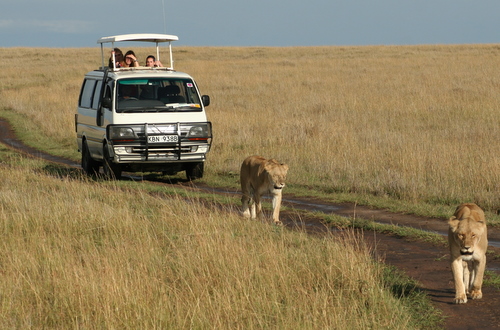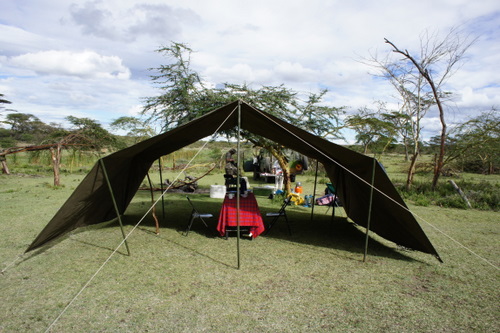There is no doubting the appeal of safaris. There is that unmistakable sense of wilderness and adventure, those wild animals and of course those vast wild landscapes. But in reality, does the experience match the hype?
Over the years, the safari industry has become polarized. You can spend upwards of $500 a night on an admittedly wonderful, if ridiculously luxurious safari or you can join the masses, pile onto a minibus and follow the crowds to successive overcrowded wildlife spots as the driver's radio cackles loudly with news of the latest sighting.

It is easy to criticize the whole minibus safari thing, but there is little difference between travelling around in an adapted minibus and traveling around in an adapted LandCruiser, little that is except for perception and marketing fluff. In reality it is the things that go along with the minibus safaris that are at issue. Driver guides rely on the radio to hear news of the latest sightings (meaning you'll be sharing your view point with a half dozen other minibuses). You never leave the confines of your vehicle. The closest you get to understanding the lives of local people is when you are dropped unceremoniously at a tourist tat shop for a "break".
- A good operator who focuses on the wildlife - which means qualified wildlife guides
- >4WDs: OK, they don't guarantee quality, but they are usually a good indicator
- Mobile camping: Safaris that involve a combination of true camping (of the roll up mat and sleeping bag variety) and modest permanent camps (proper beds and en-suite facilities) are often the best compromise. What they lack in 100% Egyptian Cotton and infinity swimming pools, they make up for in affordability and a focus on the wildlife!
- Walking opportunities: No one is suggesting you abandon your vehicle in the middle of the Masai Mara Nature Reserve (in fact, doing so is forbidden), but look out for safaris that give you some opportunity to leave the vehicle behind and stretch your legs. There is nothing like putting foot to soil to connect you spiritually, physically and emotionally to a landscape. Typically opportunities exist in private conservancies surrounding the big parks, where the risk from dangerous animals can be managed with minimum impact.
- Genuine cultural interactions: Never an easy one to engineer, but it still has to be a priority. I visited a wonderful Masai community initiative outside the Masai Mara wildlife reserve in Kenya and it remains the most memorable aspect of my last trip.
